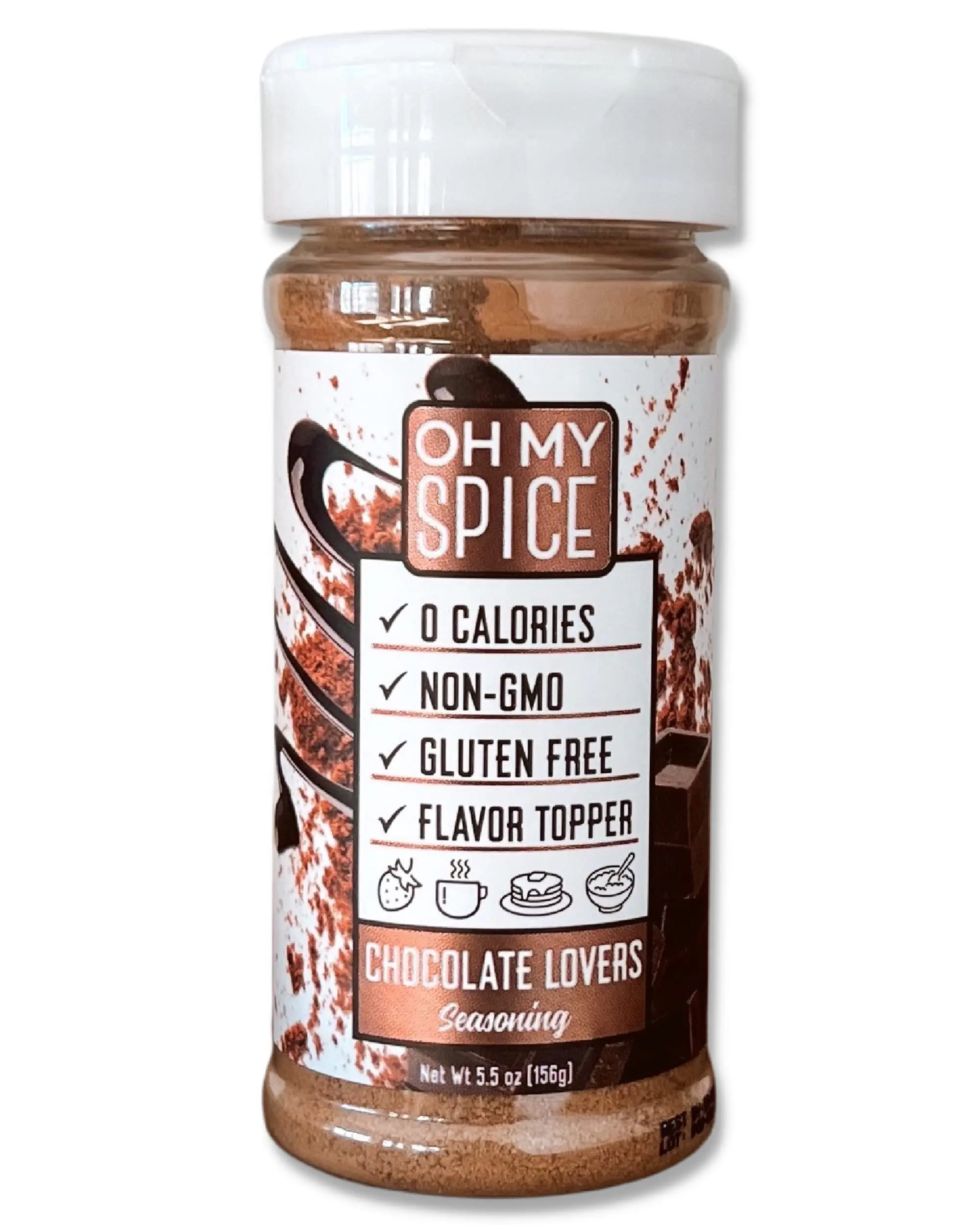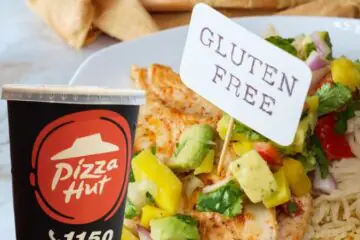Four slices of pizza can add up to 1,000 calories, so it’s important to be mindful of portion sizes. However, there are ways to enjoy pizza guilt-free by opting for healthier toppings like fresh veggies or cheese instead of meats and heavy sauces.
You can still have fun if you make smart choices and delicious pizza while keeping your calorie intake in check. Many people enjoy pizza as a food choice, but it’s no secret that it can be calorie-dense. A whole pizza can easily rack up many calories, especially if loaded with toppings and cheese.
However, Knowing the calorie content of a whole pizza can help you choose portion sizes and toppings wisely. The calorie content of a whole pizza will be discussed, as well as tips for eating pizza more healthily. So, let’s dive in and discover how to savor the pizza flavors while keeping your calorie intake in check.
Choosing The Right Pizza Size
Indulging in a whole pizza may seem tempting, but it’s important to be mindful of the calories. Surprisingly, just four slices can add up to 1,000 calories, so healthier toppings like fresh veggies or cheese can help you enjoy your pizza guilt-free.
The best way to enjoy a delicious pizza is to choose the right size, which can make a big difference, especially regarding calorie count. The size of the pizza can directly impact the number of calories it contains. In this section, we will explore the impact of pizza size on calorie count, compare calorie counts between different pizza sizes, and discuss optimal portion sizes for calorie control.
The Impact Of Pizza Size On Calorie Count:
- The size of the pizza plays a crucial role in determining its calorie count.
- Larger pizzas tend to have more slices, which means more calories per pizza.
- The bigger the pizza, the more topping and cheese it usually has, contributing to higher calorie content.
- Smaller pizzas are generally lower in calorie count compared to their larger counterparts.
- Choosing the right size can help you control your calorie intake and make healthier eating choices.
Comparison Of Calorie Count Between Different Pizza Sizes:
- A whole 16-inch pizza can contain a significant number of calories.
- If you’re watching your calorie intake, you must be mindful of portion sizes.
- Opting for a smaller pizza size, such as a 12-inch or 10-inch, can significantly reduce calorie consumption.
- Choosing a personal-sized pizza can provide a satisfying meal with fewer calories.
- It’s important to note that the exact Calories vary depending on the type of food crust, toppings, and cooking methods.
Optimal Portion Sizes For Calorie Control:
- Managing calories while enjoying pizza, it’s crucial to have a balanced approach.
- Stick to a single serving or slice size when indulging in pizza to control calorie consumption.
- Pair your pizza with a side salad or steamed vegetables to add nutrients and bulk without excess calories.
- Consider opting for thin-crust pizzas, as they tend to be lower in calories than deep-dish or stuffed-crust options.
- Pay attention to the toppings you choose. Opt for healthier options like fresh vegetables and lean proteins.
You can enjoy pizza while maintaining a balanced and healthy diet by choosing the right pizza size and being mindful of portion sizes. Remember, moderation is key to enjoying your favorite foods without overcooking calories.

Credit: www.slicepizzeria.com
Healthier Pizza Toppings
Enjoy a guilt-free pizza by opting for healthier toppings like fresh veggies or cheese instead of meats and heavy sauces. Surprisingly, just four slices of a whole pizza can total up to 1000 calories!
Exploring Low-Calorie And Nutritious Pizza Toppings:
- Opt for fresh vegetables: Load up your pizza with a colorful variety of vegetables like bell peppers, mushrooms, onions, spinach, and cherry tomatoes. These toppings add flavor, are low in calories, and are packed with essential nutrients.
- Choose lean protein: Instead of greasy meats like pepperoni or sausage, lean protein options such as grilled chicken, turkey, or shrimp. These alternatives provide a healthier balance of protein without adding excessive calories.
- Incorporate plant-based alternatives: If you’re looking for a vegetarian or vegan option, consider using plant-based meat substitutes like tofu, tempeh, or seitan. These options provide a good source of protein while being lower in calories and saturated fats.
- Add fresh herbs and spices: Enhance the taste and nutritional profile of your pizza by sprinkling fresh herbs and spices like basil, oregano, garlic, or red pepper flakes. These additions add a pop of flavor and come with their health benefits.
Substituting High-Calorie Toppings With Healthier Alternatives:
- Swap regular cheese for low-fat cheese: Opt for reduced-fat or part-skim options like mozzarella or feta. These cheeses are lower in calories and saturated fats while adding a creamy and satisfying element to your pizza.
- Choose a whole wheat crust: Instead of a traditional white flour crust, opt for a whole wheat crust. Whole wheat crusts provide more fiber and nutrients, making your pizza more filling and nutritious.
- Use lighter sauces: Traditional pizza sauces can be high in added sugars and sodium. Consider using lighter alternatives like tomato paste or homemade marinara sauce, which has fewer calories and fewer added sugars.
- Limit processed meats: Processed meats like bacon, salami, Fats, and sodium are high in ham and bacon. Instead, use leaner options like turkey bacon or grilled chicken.
Creative Ingredient Combinations For A Flavorful Yet Low-Calorie Pizza:
- Margherita pizza variation: Top your whole wheat crust with fresh tomato slices, light mozzarella cheese, and a sprinkle of basil. This classic combination is both light and flavorful.
- Mediterranean-inspired pizza: Spread a thin layer of hummus on your crust and top it with roasted red peppers, kalamata olives, feta cheese, and a drizzle of olive oil. This combination offers a delicious balance of flavors and textures.
- BBQ chicken pizza alternative: Use grilled chicken breast, a tangy BBQ sauce, red onion slices, and a sprinkle of cilantro to create a healthier version of this popular pizza.
- Veggie-packed pizza: Load up your pizza with a colorful assortment of fresh vegetables like broccoli, zucchini, cherry tomatoes, and artichoke hearts. Add a sprinkle of low-fat cheese for extra flavor.
Remember, a healthier pizza is about making smart choices with toppings and portion sizes. By incorporating these ideas, you can enjoy a delicious pizza while keeping the calories in check.
Making Healthier Pizza Crust
Enjoy a healthier pizza crust by choosing fresh veggies or cheese instead of heavy meats and sauces. Surprisingly, just four slices of a whole pizza can add up to 1,000 calories!
Understanding The Role Of Pizza Crust In Calorie Count:
Pizza crust plays a significant role in the overall calorie count of a pizza. Types of crust can have a significant impact on calorie content. Understanding the impact of different crust options on calorie intake is important to make healthier choices.
Different Crust Options And Their Impact On Calorie Intake:
When it comes to pizza crust, there are various options available that can greatly affect the calorie intake. Here are a few popular crust choices and their impact on the overall calories:
- Traditional Crust: A classic pizza crust made with white flour is typically higher in calories due to its refined nature.
- Thin Crust: Opting for a thin crust Reduces the overall calorie content of your diet pizza as it contains less dough than other crust options.
- Whole Wheat Crust: Choosing a whole wheat crust is a healthier alternative as it provides more fiber and nutrients while reducing the calories.
- Cauliflower Crust: Made from cauliflower, this gluten-free crust option is low in calories and suitable for those following a low-carb or keto diet.
Recipes And Tips For At Home:
Making your pizza crust at home gives you control over the ingredients and allows you to create a healthier version. Here are some recipe ideas and tips for making a healthier pizza crust:
- Whole Wheat Flour: Substitute white flour with whole wheat flour to increase your crust’s fiber and nutrient content.
- Flaxseed Meal: Adding flaxseed meal to your dough can provide extra fiber and omega-3 fatty acids.
- Veggie Crust: Experiment with alternative crust options using vegetables like cauliflower, zucchini, or sweet potatoes.
- Portion Control: Keep the size of your pizza crust in check to manage your calorie intake. Opt for smaller-sized pizzas or thinner crusts to reduce calories.
- Toppings: Be mindful of the toppings you choose as they can significantly impact the overall calorie content. Opt for lean proteins, plenty of veggies, and lighter cheeses to keep it healthier.
By understanding the role of pizza crust in calorie count and making informed choices about the type of crust you use, you can enjoy a delicious pizza without compromising your health goals. Try out different recipes and tips to create a healthier pizza crust at home.
Balancing Cheese And Sauce
Enjoying a whole pizza doesn’t have to mean consuming excessive calories. You can savor the deliciousness guilt-free by balancing cheese and sauce and opting for healthier toppings.
The Role Of Cheese And Sauce In Calorie Content:
- Cheese and sauce are two key ingredients in pizza that significantly contribute to its calorie content.
- The type and amount of cheese and sauce used can greatly affect the overall calorie count of a pizza.
- Cheese is a high-calorie ingredient due to its fat content, while sauce can contain added sugars and fats.
- Balancing the amount and type of cheese and sauce can help reduce the calorie content of a pizza without compromising on taste.
Choosing Lower-Fat Cheese Options:
- Opting for lower-fat cheese options can help reduce the calorie content of a pizza.
- Look for reduced-fat or part-skim cheese varieties, such as mozzarella or ricotta.
- These lower-fat cheese options still provide the desired cheesy flavor while cutting down on calories.
- Experiment with different types of cheeses to find the right balance between flavor and calorie content.
Reducing Calorie Count In Pizza Sauce Without Compromising On Taste:
- Choosing a lower-calorie pizza sauce can help reduce the overall calorie count without sacrificing taste.
- Look for tomato-based sauces that are low in added sugars and fats.
- Consider making your own sauce using fresh ingredients like tomatoes, herbs, and spices for a healthier option.
- Cut back on the amount of sauce used on the pizza or opt for a lighter drizzle instead of a heavy coating.
- Add flavor to the sauce with herbs and spices to enhance the taste without adding extra calories.
By incorporating these strategies, you can enjoy a delicious and satisfying pizza while keeping the calorie count in check. Remember that moderation is key; a balanced pizza with various toppings can make for a healthier meal.
https://www.youtube.com/watch?v=vuIWQspQyE0
Sides And Drinks For A Balanced Meal
Did you know that four slices of a whole pizza can add up to 1,000 calories? However, you can still enjoy pizza guilt-free by opting for healthier toppings like fresh veggies or cheese instead of meats and heavy sauces.
Adding Nutritious And Low-Calorie Sides To Complement The Pizza:
- Opt for a fresh, green salad with a variety of vegetables like lettuce, cucumbers, and cherry tomatoes. A drizzle of light vinaigrette can add a burst of flavor without piling on calories.
- Roasted vegetables such as zucchini, bell peppers, and carrots make a delicious and healthy side dish. Season them with herbs and a touch of olive oil before popping them in the oven.
- Steamed broccoli or cauliflower florets are a great way to add nutrients and fiber to your meal without adding extra calories. Sprinkle them with a touch of parmesan cheese for added flavor.
- Instead of traditional garlic bread, opt for whole-grain bread or whole wheat pita bread that is lightly toasted. Pair it with a flavorful hummus or salsa for a satisfying and healthy side.
- A cup of homemade tomato soup or vegetable soup can be a comforting and nutritious addition to your pizza meal. Look for recipes that use fresh ingredients and limit the addition of cream or heavy sauces.
Healthier Drink Options To Pair With Pizza:
- Water is always a good choice and can help you stay hydrated while enjoying your pizza. Add a slice of lemon or lime for a refreshing twist.
- Unsweetened iced tea or green tea can provide antioxidants and flavor without any added calories. Steer clear of sweetened or flavored varieties that can contain added sugars.
- Sparkling water or seltzer with a splash of fruit juice can give you the fizz and flavor you crave without the excess calories of soda.
- If you prefer something with a little more flavor, opt for a glass of low-fat milk or unsweetened almond milk. These options provide calcium and protein to round out your meal.
- Herbal tea, such as chamomile or peppermint, is a great choice for those looking to relax and aid digestion after a satisfying pizza meal.
Creating a well-rounded and satisfying meal experience:
To create a balanced and satisfying meal, it’s important to consider the nutritional value of the sides and drinks you choose to pair with your pizza. By incorporating nutritious and low-calorie sides, you can add variety and ensure you’re getting a balance of vitamins and minerals.
Choosing healthier drink options can help you stay hydrated and avoid unnecessary calories from sugary beverages. You can enjoy a delicious meal by following these tips for a pizza meal while maintaining a balanced diet.
Mindful Eating Tips When Enjoying Pizza
Enjoying pizza mindfully can help you manage calories. Opt for healthier toppings like fresh veggies or cheese instead of meats and heavy sauces to make your whole pizza a guilt-free treat.
Pizza is undoubtedly a delicious treat that many people enjoy. However, it’s easy to overindulge and consume more calories than necessary when enjoying a whole pizza. By practicing mindful eating, you can savor your pizza while controlling your portions and avoiding overeating.
Here are some strategies for portion control and mindful eating when enjoying pizza:
- Choose a smaller-sized pizza: Opting for a personal or small-sized pizza can help control your portion size. This way, you can still enjoy your favorite flavors without overindulging.
- Share with a friend: Splitting a pizza with a friend or loved one allows you to enjoy a satisfying portion while reducing the number of calories consumed. Plus, it’s a great way to bond over a delicious meal.
- Load up on veggies: Opt for veggie toppings instead of meats or heavy sauces. Flavorful vegetables, including bell peppers, mushrooms, onions, and spinach, provide added nutrients and fill you up, reducing the need for excessive consumption.
- Be mindful of the crust: The crust is a significant source of calories in pizza. If you’re concerned about calorie intake, consider opting for a thin crust instead of a thick or deep-dish crust.
- Listen to your hunger cues: Take the time to listen to your body’s hunger cues before reaching for another slice. Pay attention to feelings of fullness and eat until you’re satisfied, rather than mindlessly consuming the entire pizza.
- Practice mindful eating: Take your time eating your pizza and savor every bite. Pay attention to the flavors, textures, and aromas. Enjoying your food. Being mindful can help you feel more satisfied with fewer slices.
- Avoid distractions: Watching TV or scrolling through your phone while eating can lead to mindless eating and overeating. Enjoy the experience of eating pizza instead of focusing on your meal.
By implementing these mindful eating tips when enjoying pizza, you can satisfy your cravings while maintaining control over your calorie intake. Remember, moderation is key, and it’s all about balancing indulgence and mindful choices. Enjoy your pizza guilt-free, knowing you’re making mindful decisions aligning with your health goals.
Frequently Asked Questions
A whole pizza containing 1,000 calories is typically equivalent to about four slices.
A whole 16-inch pizza contains approximately 3384 calories.
A whole 14-inch pizza contains approximately 2,400 to 2,800 calories.
A whole pepperoni pizza typically contains around 2,500 to 3,000 calories.
Conclusion
It’s important to be mindful of the calories in a whole pizza, especially when trying to maintain a healthy lifestyle. Surprisingly, just four slices of pizza can total up to 1000 calories! However, there are ways to enjoy pizza guilt-free by opting for healthier toppings like fresh vegetables or cheese instead of meats and heavy sauces.
By making these simple substitutions, you can still indulge in your favorite pizza while keeping your calorie intake in check. Remember, a 16-inch cheese pizza contains 3384 calories, while a 14-inch pizza contains approximately 1880 calories. Knowing these calorie counts can help you make informed choices and manage your daily calorie intake more effectively.
So, don’t let the calorie count discourage you next time you’re craving pizza. Just make smarter choices and enjoy your favorite slices in moderation. It’s all about balancing and maintaining a healthier approach to your pizza consumption. Happy eating!

As the author of the “Ultimate Pizza Guide: Recipes, Tips & Secrets Revealed,” I’m dedicated to sharing my love for pizza and empowering others to create delicious homemade pizzas with ease. Join me on a journey to uncover the secrets to perfecting your pizza game!



